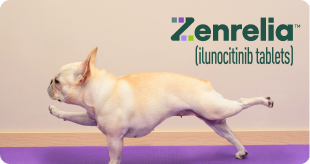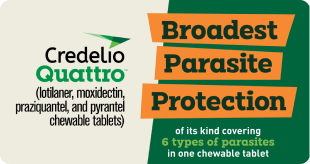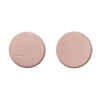 Temporarily Out of Stock
Temporarily Out of Stock
 Thank you, we will notify you when this product is available.
Thank you, we will notify you when this product is available.


What is Famotidine?
Famotidine is a non-prescription medication used in dogs and cats to reduce the amount of stomach acid being produced. Although Famotidine is not FDA-approved for use in veterinary medicine, it is a commonly accepted practice for veterinarians to prescribe this medication for dogs and cats. Famotidine is an H2 receptor antagonist. H2 receptor antagonists are use to reduce the production of stomach acid. Famotidine aids in the healing of stomach ulcers and stomach ulcer formation. Famotidine is also used to treat gastritis, esophagitis, and GERD. Famotidine may also be used for purposes other than those listed here.
For:
Dogs and Cats
Benefits:
- Useful in the treatment and prevention of gastric (stomach) and intestinal ulcers
- Helps heal ulcers that are already present
How does famotidine works?
Famotidine blocks H-2 receptors from secreting gastric acids into the stomach. Blocking these receptors prevents ulcers from forming and also helps present ulcers time to heal.
Cautions:
Famotidine should be used with caution in pets that are pregnant or pets with heart, kidney, or liver disease.
Brand Name:
Pepcid
Generic Name:
famotidine
What is the most important thing I should know about famotidine?
Famotidine is a non-prescription medication not FDA approved for veterinary use; however, it is a commonly accepted practice for veterinarians to use this medication in dogs and cats to reduce the amount of stomach acid produced. Famotidine is available as packages containing 30 x 10 mg tablets. The usual dose in dogs is 0.22 mg to 0.44 mg/lb every 12 to 24 hours. The usual dose in cats is 0.22 mg/lb every 12 to 24 hours.
What should I discuss with my veterinarian before giving famotidine to my pet?
Tell your veterinarian if your pet has heart, liver, or kidney disease. Tell your veterinarian if your pet is pregnant since it may affect weight gain.
How should famotidine be given?
Give this medication exactly as directed by your veterinarian. If you do not understand the directions ask the pharmacist or veterinarian to explain them to you. Famotidine should not be given with food. Food will decrease its effectiveness. Store famotidine at room temperature away from moisture and light. Keep this medication away from children and pets.
What are the potential side effects of famotidine?
For dogs and cats, if any of the following serious side effects occur, stop giving famotidine and seek emergency veterinary medical attention; an allergic reaction (difficulty breathing; swelling of the lips; tongue or face; hives). Side effects are rare but may include loss of appetite and tiredness. Other side effects may also occur. Talk to your veterinarian about any side effect that seems unusual or bothersome to your pet.
What happens if I miss giving a dose of famotidine?
Give the missed dose as soon as you remember during the same day. However, if you don't remember until the next day, skip the dose you missed and give only the next regularly scheduled dose. Do not give a double dose of the medication.
What happens if I overdose my pet on famotidine?
Overdose is rare. If overdose is suspected, seek emergency veterinary medical treatment. Symptoms of famotidine overdose may include vomiting, restlessness, pale gums, rapid heart rate, or collapse.
What should I avoid while giving famotidine to my pet?
Famotidine should not be used in pets allergic to it. Use famotidine with caution in pets with heart, kidney, or liver disease. Use with caution in pregnant females.
What other drugs will affect famotidine?
Tell your veterinarian if your pet is being given antacids, metoclopramide, Sucralfate, digoxin, or ketoconazole as interactions can occur. Give famotidine 2 hours before or 2 hours after the other medications. When given with azathioprine, famotidine may further decrease white blood cell counts. Drugs other than those listed may also interact with famotidine. Talk to your veterinarian or pharmacist before giving any prescription or over the counter medicines including vitamins, and supplements.


Famotidine Directions:
- Please refer to the chart below for proper dosage.
Give this medication on an empty stomach.
Famotidine Dosage:
| Weight | Dosage |
|---|---|
| All weights | 0.22 mg/lb every 12 to 24 hours |
| Weight | Dosage |
|---|---|
| All weights | 0.22-0.44 mg/lb every 12-24 hours |
| Horses |
|---|
| Do not use! |
Storage:
Should be stored at room temperature, away from moisture and light.


Famotidine Ingredients:
| Active Ingredients (per tablet) | Amount |
|---|---|
| Famotidine | 10 mg |


 Swipe
Swipe
Customers also boughtView All
 Swipe
Swipe















































 Would recommend
this product
Would recommend
this product








